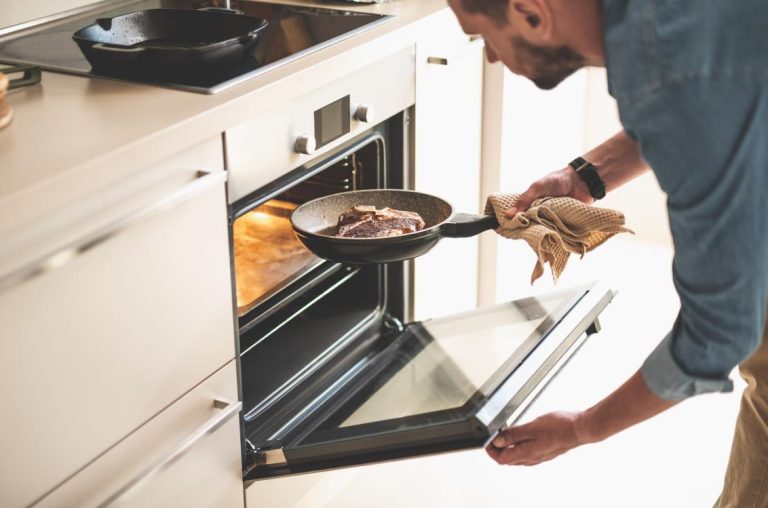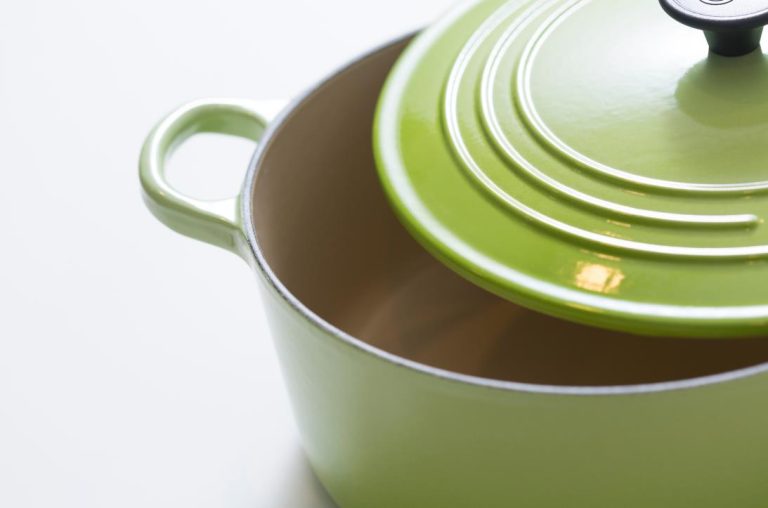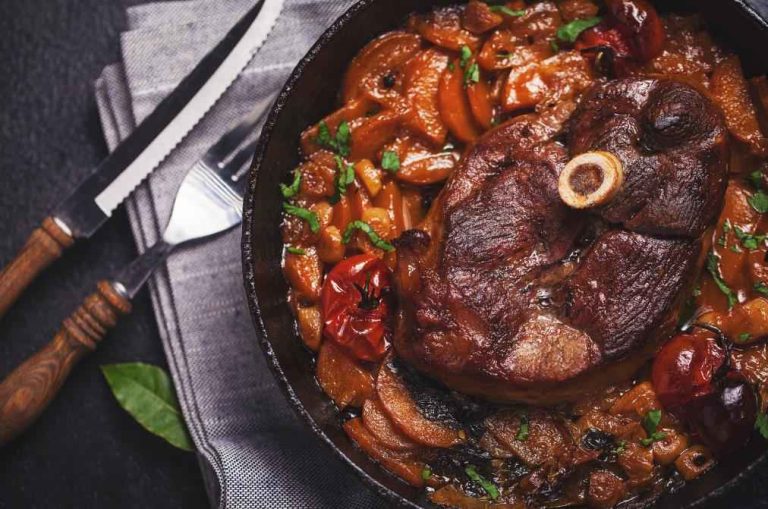Cast iron skillets can have an exterior similar to non-stick pans. These sturdy cooking instruments provided the original non-stick surface for household needs. However, that is before the time of Teflon pan’s advent.
Simply getting a cast iron skillet and expecting it to be non-stick would be wrong. They need to be seasoned to uphold this ability, and more importantly, looked after to maintain it.
Therefore, cast iron pans and skillets can be non-stick, similar to those with a Teflon coating, but there is more to this ability. Let’s dig deep into the mechanics of the material and the details below.
What exactly is a non-stick pan?
Non-stick pans are the most popular cookware in the United States, making up more than 70 percent of pans and skillets. These instruments are handy in all types of cooking, whether frying or sauteing.
As their name suggests, non-stick pans prevent foods from sticking to the surface when cooking. Most non-stick cookware has an aluminum base. The cooking area is then coated with non-stick materials to give their known attributes. They are lightweight and conduct heat fast.
Knowing the food won’t stick to the pan is necessary for chefs to brown and cook sticky ingredients. This ability of non-stick pans makes them easy to use, especially for novice and home cooks. The non-stick cookware is also effortless to clean, often scratch-resistant and doesn’t demand much from the user.
While these are goods, it is worth noting that they have downsides that some cooks don’t appreciate. Using them at high heat can make the non-stick materials on the surface degrade and lose their capabilities. Non-stick pans and skillets are best used at medium or medium-high heat. Otherwise, the surface can hold onto foods or alter the taste in some cases.
What non-stick pans are made of?
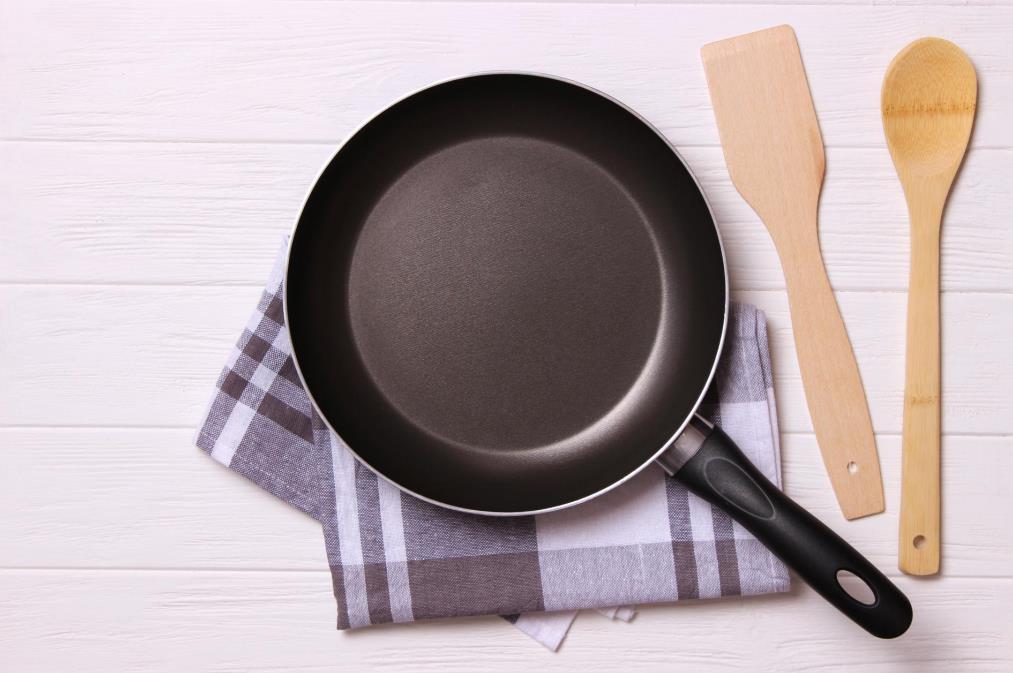
A variety of materials are used for non-stick pans, polytetrafluoroethylene (Teflon) being the most common.
At the turn of the 21st century, anodized aluminum and silicon dioxide were introduced to non-stick cookware, particularly after Teflon was scrutinized heavily for causing health problems.
Later the studies raised concerns about perfluorooctanoic acids (PFOA) in Teflon. Since 2013, polytetrafluoroethylene pans and skillets have been free from this chemical compound. Today, the materials used for non-stick cookware are entirely food-safe. Even the chipped or flaked particles don’t pose a health risk when ingested.
What is cast iron cookware?
Cast iron skillets are heavy-duty cookware made from cast iron, hence the name. The material for making this cookware is beyond robust. You may even spot a half a century old cast iron skillet in antique shops or garage sales. These cooking tools are made to last forever and do so with some prerequisites.
Buy Wholesale Cookware and Start Scaling up with Us Today
Contact us and connect with a sales rep to get a free quote.
Seasoning an iron cast skillet
Seasoning isn’t just for giving the cast iron a non-stick surface. It’s also a way to prevent rusting that can deteriorate the cookware in a matter of hours. Here’s how to season cast iron cookware to give it non-stick abilities, step-by-step.
- Apply a very thin coat of neutral oil, like canola or sunflower oil, to the entire cast iron cookware, including the bottom and the handle – avoid olive oil due to low smoke point.
- There are several ways to accomplish an even coat, but dropping about a tablespoon of oil and rubbing the pan with a paper towel is the easiest. The skillet/pan should feel dry once finished.
- Preheat the oven to 375 Fº (175 Cº) and leave the cast iron cookware baked for one hour.
- When it’s time, turn the oven off and leave the cast iron cool until it reaches room temperature.
It’s best to repeat this process multiple times until the cast develops a nice, smooth finish on the surface.
If you sell cast iron cookware with silicon or other handles that aren’t safe in the oven, seasoning should start with the first step and move to the stove.
In this case, begin seasoning the cast iron cookware by preheating the pan over medium heat for about ten minutes. In the first attempt, pay attention to the surface for drying. If it gets dry, apply tiny amounts of oil and rub the entire surface.
A good way to tell if this process works is to watch out for the smoke. If the oil smokes, it’s working, but if it goes on for too long, turn the heat down until it stops and continue heating the pan for an additional ten minutes.
The entire process should take about 20 minutes in total, and once done, leave the pan cool on the stovetop. Never use cold water or another rapid cooling method. These can lead to warps or cracks.
Caring for a cast iron skillet
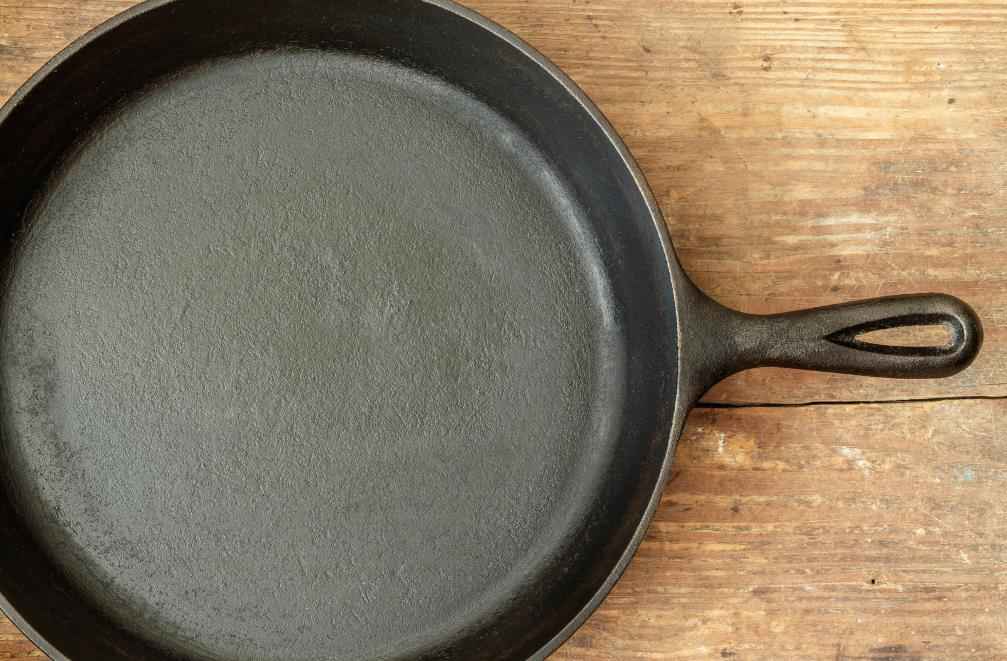
There is a resemblance between cast iron and non-stick skillets to carbon steel and stainless steel knives. Since the foundation of cast iron skillets is similar to carbon steel knives, much of the care elements apply to the skillets. Here are tips on keeping cast iron cookware in top condition.
- Never wash a cast iron skillet in the dishwasher. Always clean them by hand and avoid soaking them in water. The cleaning should be thorough and quick.
- Although an aged cast iron skillet won’t mind, it’s best to avoid cooking acidic foods, like vinegar, citrus, or tomatoes, when you’ve just seasoned it.
- Before putting a cast iron skillet away, apply a coat of cooking oil with a high smoke point and rub the surface. This will prepare it for the next use and give it a re-seasoning effect. To further improve and maintain seasoning, heat the cast iron skillet over medium heat for ten minutes after cleaning and let it cool before storing.
- If the cast iron skillet sticks to food, scrub the seasoning off and repeat the seasoning process from scratch, though you may get away with only re-seasoning at times.
- Cooking oily and fatty foods, like crisping bacon or frying wings, helps to preserve seasoning. If a cast iron skillet feels dry, consider cooking foods that will help the surface for that day.
Additionally, using gentle utensils made from wood or rubber to stir foods and cleaning the pan right after it cools are essentials for keeping cast iron cookware in top condition.
Cast iron vs. non-stick pans
Non-stick pans have this feature from the factory with their coating. They are lightweight, affordable, and easy to replace. Although they aren’t the most durable, it’s convenient for many cooks as they don’t require any maintenance aside from cleaning. Cast iron skillets, on the other hand, need close attention from the user.
Cast iron skillets are technically not non-stick on their own. However, the cooking surface of cast iron cookware can become non-stick with seasoning. This process creates a non-toxic, non-stick surface that browns foods with a crisp exterior. That said, cast iron cookware isn’t non-stick on its own.
What kind of cookware should you sell and why?

Cast iron cookware is undoubtedly great for several reasons. They are sturdy, can be used in an oven to bake foods, and cook foods evenly with great heat conductivity. These are advantages any cook would want in their cookware, but cast iron requires close attention.
Cracks, warps, or even rust are inevitable when these cooking instruments don’t get the attention they need. Although cast iron skillets and pans are more expensive than other types of cookware, they last forever with care.
Buy Wholesale Cookware and Start Scaling up with Us Today
Contact us and connect with a sales rep to get a free quote.
Non-stick pans are convenient with their renowned surface and carefree nature. They are the best pans to use when you want to scramble a few eggs at night and give a quick scrub and rinse to clean.
These main attributes bring us to selling the right cookware. Most home cooks prefer non-stick pans for their convenience of use. Serious cooks and professionals opt for cast iron cookware for even heat conductivity that adds to the flavor of foods.
The majority of consumers, whether at home or restaurants, are better off having both. That said, selling both will give more alternatives to your customers and increase the chances of selling two products at once. However, if you were to choose either one of the two, it’s best to understand what type of people walk into your store and examine their needs. From there, you can pick the one that suits your clientele the most to make the right decision.
Final words
Seasoning the surface answers the possible question of whether cast iron cookware sticks to foods or not.
Many cooks take pride in their cast iron skillets. In return for maintaining them, cast iron cookware benefits chefs with a non-stick surface that leads to tasty bits.
If selling cookware is on your agenda, whether it’s non-stick or cast iron, you can always contact LeeKnives. We provide a fully-fledged solution to wholesale kitchen products, contact us and get a free quote today.

